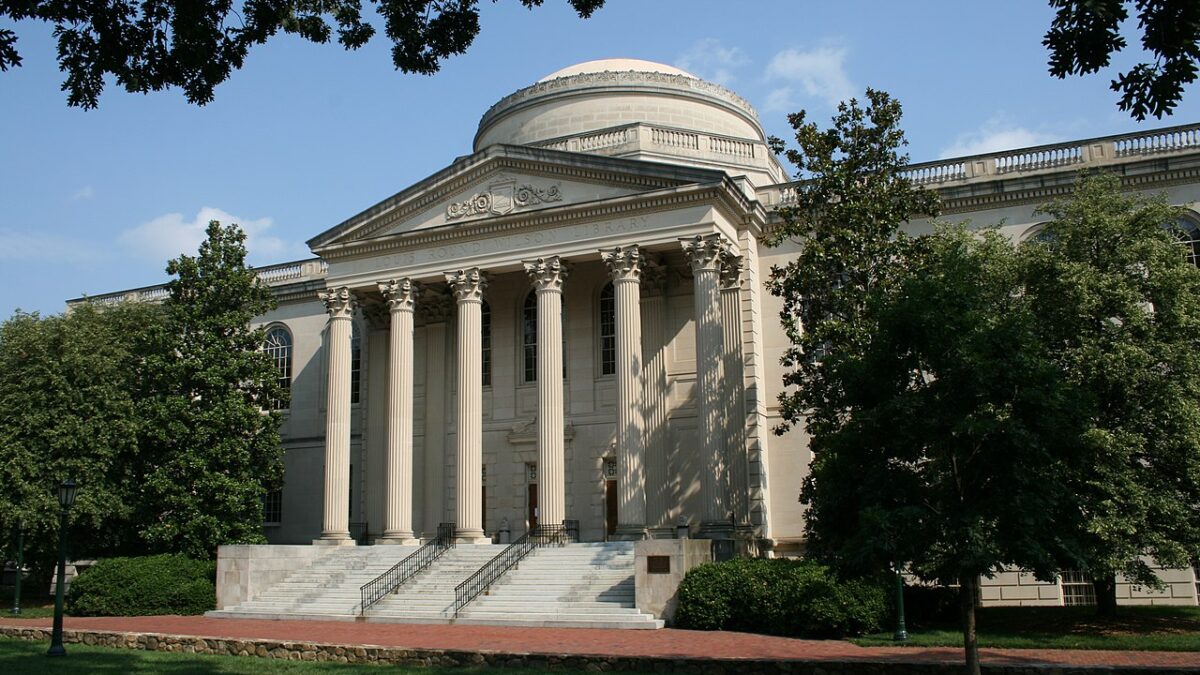
Since my April student loan payment to the U.S. Department of Education was processed, I now have about $15,575 remaining on my balance for Denver’s Regis University, from which I graduated in 2011. Earlier on, as I paid back much of my debt mountain, I took out a few forbearances.
In other words, I know what it’s like to feel the strain of student debt. But hardship and costliness are not enough to justify forcing taxpayers to pay my bills for me, or anyone else’s.
Presidential contender and Sen. Elizabeth Warren’s new, “transformational” proposal for “universal free public college and cancellation of student loan debt” was presented in a Medium post. Her Magic Student Loan Debt Eraser is a utopian fantasy, and the wrong “solution” to a legitimate problem.
Where Warren Actually Gets It Right
At $1.5 trillion and skyrocketing nearly 450 percent in the past 15 years (from $345 billion in 2004), student loan debt has reached “crisis levels.” In 2018, the Brookings Institution found that “nearly 40% [of borrowers] may default on their student loans by 2023.”
Warren correctly notes that excessive student debt contributes to lower home ownership rates, slowing small business generation and increasing dropouts. She’s right that federal policies have “push[ed] families that can’t afford to pay the outrageous costs of higher education towards taking out loans.”
Impoverished and minority communities are deeply hurt by the current system. For example, as Dr. Richard Vedder put it, “In 1970 the bottom quartile of families by income accounted for 12 percent of total bachelor’s degrees received by age 24, but those families only accounted for 9.4 percent in 2010.”
Where Warren goes wrong is in misidentifying the root causes and how to stem the crisis. Its origin isn’t a failure to “treat higher education like our public school system–free and accessible to all.” It’s because of a failed government-designed system.
We Got Into This Mess With Government Payouts
For decades, the fallacy that everyone must go to college spurred the federal government to substantially expand its role in growing the number of students. The stroke of genius: if we dole out financial aid, more people will go to college because they will be better able to afford it. But the principles of supply and demand don’t vanish just because we think there is a strong “social demand” for something.
In 1987, Secretary of Education Bill Bennett posed his Bennett Hypothesis: “Increases in financial aid in recent years have enabled colleges and universities blithely to raise their tuitions, confident that Federal loan subsidies would help cushion the increase.” Thirty-two years later, the experiment has continued unabated because these programs have exploded. I’ve renamed it Bennett’s Law of Tuition Stimulation. As explained in a 2017 op-ed:
In [2015] the Federal Reserve Bank of New York observed a direct correlation between student loan borrowing and tuition levels, noting that ‘higher tuition costs raise loan demand, but loan supply…[relaxes] students’ funding constraints.’ The Fed spoke of a ‘pass-through effect on tuition,’ whereby, for every dollar received in subsidized federal loans, tuition rises 65 cents. They report similar findings for Pell Grants (55 cents) and unsubsidized loans (30 cents).
As the Fed study indicates, student debt isn’t rising simply because college is too expensive. Rather, school is too expensive because of rising student loans and grants. [Dr. Richard Vedder, director of the Center for College Affordability and Productivity] found that, “When someone other than the user is paying the bills, those bills tend to explode since the buyer is not sensitive to price.” In other words, the expansion of student loans and other third-party payments for college leads to higher costs by separating students from the actual cost of tuition.
Even more, beginning in 1976 and finalized by 2005, Congress virtually eliminated borrowers’ ability to escape default through discharging their student debt in bankruptcy. Before then, loans were harder to get and high-interest because they could be discharged. Plus, most loans came from private lenders, with more limited government involvement (undone by the Affordable Care Act).
At that time, lenders took on risk when they gave out loans, encouraging more carefully created loan criteria that helped hold costs down. The floodgates opened as Congress chipped away at—and ultimately neutered—bankruptcy protection.
An Alternative Proposal
Much has already been written on why Warren’s Magic Student Loan Debt Eraser is fiscally outrageous, geographically uneven, economically unfair, utterly unwise, and culturally wrong, among other problems. Fortunately, there are more economically sound, market-centered, responsibility-affirming ways to fix it. Here are a few.
- Restore bankruptcy protection for deeply indebted borrowers. Far from “canceling student debt” outright, bankruptcy protection provides an out for those on the verge of default. Even more, it would restore risk to the lender as well as a sense of responsibility in making loan decisions. Legislation has been introduced to do this.
- Make individual higher ed institutions responsible for a percentage of the losses on a discharged or defaulted loan. Tucker Carlson has advocated this “cosigning” concept for defaults, and Warren even cosponsored a bill to establish risk-sharing between borrowers and colleges—forcing institutions to make smarter decisions on program offerings. (Colleges would become cosigners on future loans.)
- Approve legislation like the Student Loan Repayment Acceleration Act to help borrowers pay back their loans more quickly. Sen. Cory Gardner (R–CO) has introduced a bill to let employers and employees together contribute up to $10,000 annually tax-free to a 401k-style account for student loan repayment. A growing number of companies are offering this as a benefit, and Gardner’s idea is to expand the offering. Also, self-employed and sole-proprietors could claim student debt as an above-the-line deduction up to $10,000 per year. While not sweeping, the SLRAA would offer much-needed relief.
- Fundamentally reform how we fund higher education. Existing student loan programs should be consolidated and tightened up in amount and availability, and ideally privatized, and coupled with an income-based repayment plan and refinancing options. Congress should consolidate available tax credits, reorganize Pell Grants into a Pell Stipend (voucher) program, and revamp the broken accreditation system.
How we fund higher education in America today isn’t working, but offering free college goody bags and using a magic eraser to wipe away student debt isn’t the right solution. There are plenty of effective alternatives that are cost-effective, respect individual responsibility, and address the root of the problem. Let meaningful debate commence.









